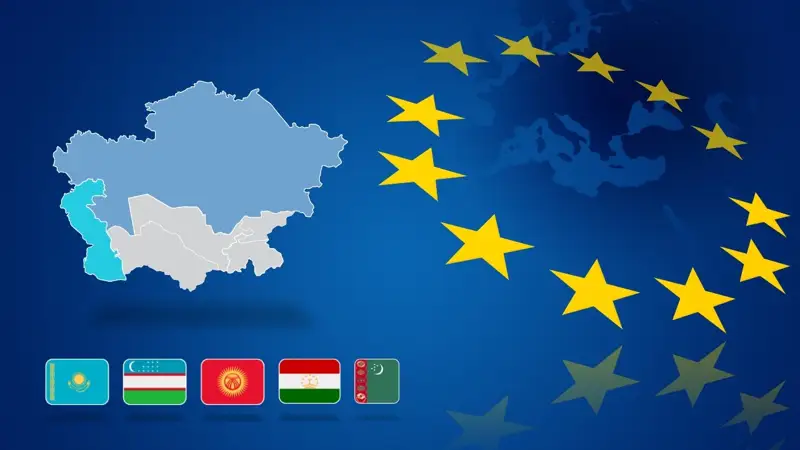Why the European Union is strengthening ties with Central Asia?
For Central Asian countries, the European Union is both a major export market and a source of investment and technology, reports a Kazinform News Agency correspondent.

Economy comes first
Relations between the EU and Central Asia have always been significant, especially in economic terms. Politically, the EU often acted in alignment with broader Western interests — sometimes criticized as the stance of the “collective West.” This made sense, given the shared values of Western democracies, blending economics, politics, and ideology.
The EU’s 2019 Strategy for Central Asia aimed to support the region's development as a “more sustainable, prosperous, and cooperative space.” While ideological issues were included, the EU generally approached the region pragmatically, respecting local specifics.
Since gaining independence, Central Asian states have viewed the EU as a key link to the outside world — particularly those with open market economies and more liberal societies, such as Kazakhstan and Kyrgyzstan. Uzbekistan and Turkmenistan followed more state-controlled models, while Tajikistan struggled with the aftermath of civil war in the 1990s. Uzbekistan’s reforms in the 2010s significantly boosted regional interaction with the outside world, including the EU.
For the EU, Central Asia has been an important trade partner and a part of the region’s geopolitical chessboard, involving China, Russia, the U.S., and others. The EU is interested in maintaining influence in this strategically vital area — especially with neighboring South Asia and the ongoing challenges in Afghanistan, where some Central Asian states can provide humanitarian aid and infrastructure.
EU’s interest in Central Asian transit routes
Europe has long been interested in Central Asia, and this interest has grown, particularly as EU-U.S. trade tensions increase amid talk of trade wars. As global trade faces uncertainty, regional cooperation is becoming more important.
Some experts see this as a shift from globalization to regionalization — a trend once promoted by the BRICS countries. While BRICS aimed to challenge Western-dominated institutions, they’ve struggled to create real alternatives, such as a shared trading currency.
Now, with trade wars becoming a reality, ideology is less important than preserving trade itself. This is where Central Asia’s role grows.
Geopolitical competition has long centered on Central Asian transport corridors. Two key routes are especially important: one connecting Europe and China, and another hypothetical North-South route to southern seas. For landlocked Central Asian countries, such transit routes are crucial for development.
One key project is the “Middle Corridor,” supported by China as part of its Belt and Road Initiative. It runs from China through Kazakhstan, across the Caspian Sea, through Azerbaijan and Georgia, and into Türkiye and Europe. In the first nine months of 2024, cargo volume on this route through Kazakhstan rose by 70%.
China and the EU share strong interests in developing this corridor and in maintaining a rules-based global trade system amid growing protectionism, especially from the U.S.
Thus, the EU’s push to deepen trade ties with Central Asia — and beyond to China — makes perfect sense. Both the EU and China benefit from preserving global trade, and ideology takes a backseat in this context.
Huge regional potential
In mid-March, EU Commissioner for International Partnerships Jozef Sikela visited Central Asia, highlighting the region’s “huge untapped potential” as part of the Global Gateway strategy.
Later in March, EU High Representative for Foreign Affairs and Vice President of the European Commission, Kaja Kallas, toured the region. On March 27, she attended the 20th meeting of Central Asian foreign ministers and held talks with Uzbek President Shavkat Mirziyoyev in Tashkent. On March 28, she met with Kazakh President Kassym-Jomart Tokayev in Almaty.
These visits are part of preparations for the upcoming EU–Central Asia summit in Samarkand, scheduled for April 3–4, 2025, with participation from regional presidents, European Council President António Costa, and European Commission President Ursula von der Leyen.
There’s clear mutual interest in expanding cooperation in transport, energy, natural resources, and technology. Informal negotiations are also expected behind the scenes.
On March 29, the presidents of Kazakhstan and Uzbekistan met in Almaty. Recently, Central Asian countries have aimed for a more united approach in foreign policy — a logical step in today’s complex global environment. Despite the challenges, new opportunities are emerging, and Central Asia is becoming an increasingly active player, skillfully navigating between global and regional powers.
Earlier, it was reported that the President of Slovenia arrived in Kazakhstan for an official visit.
